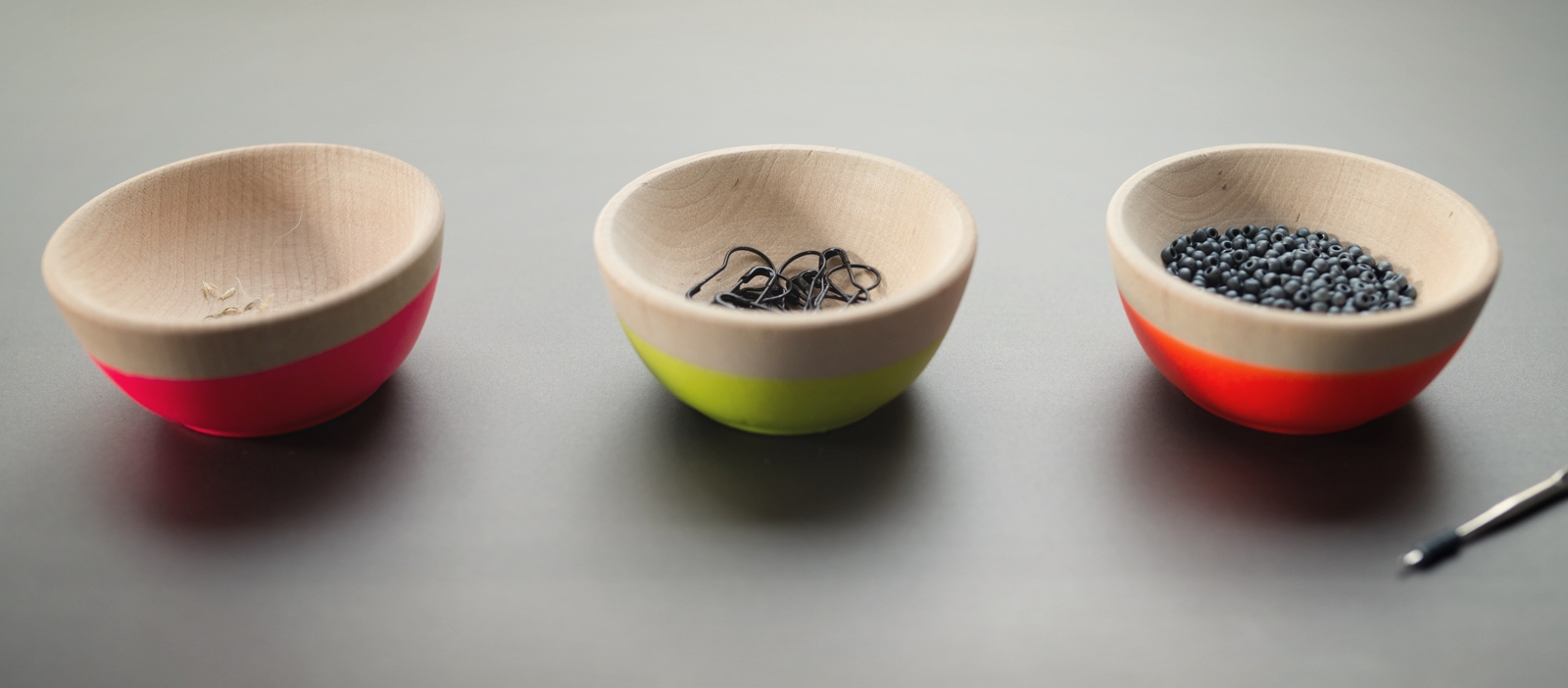Today’s Knitting Tools-Day topic wasn’t the one I intended, but since my intentions and I tend to part ways soon after we meet despite all our promises to get together soon, we begin my belated second Tools-Day post about bowls. (This post is not about yarn bowls, which serve an entirely different function.* I’m talking about bowls, like the kind you might serve a salad in.)
Today’s “tool”, you may point out, is not really. Truthfully, I didn’t think of bowls as tools until this morning** while I was trying to sneak in a few rounds on a seamless sweater sleeve. I’ve been using this bowl to knit larger projects for so many years without giving it a second thought, it hadn’t dawned on me that it fits nearly all my requirements for a good knitting tool. Namely, that it makes the knitting process easier, more efficient, and therefore, more enjoyable.
If you have knit anything that reaches a certain mass which makes it rather burdensome to keep turning over your project for each new round or row, you probably have some inkling of where I’m at with this sweater right now. I’ve been at this stage for a while because there was a lot of frogging in the last several weeks and I might have given up all hope without this handy wooden bowl. (Well, maybe not really, but I’m sure it would have been a more frustrating experience without it.)
Working on my Arboreal sweater which has reached critical mass. And maybe not coincidentally, reading Endure by Alex Hutchinson
The bowl was rescued from a fancier-than-usual Christmas gift basket we received many years ago. I initially wasn’t sure how I was going to dispose of the bowl after devouring all the edibles, but my inner-hoarder saw that it wasn’t actually a bad looking bowl and hey, I might be able to make use of it one day. (The mantra of hoarders everywhere).***
It was the perfect size for a salad bowl but I wasn’t about to vouch for its actual food safety so it was relegated to holding WIPs or yarn that was soon to meet its destiny. This clearly is not a specialized function that is served only or best by a large wooden bowl, but what I did shortly discover was that setting the bowl on my lap and knitting with my growing project in the bowl meant that those seemingly endless turns of a heavy in-progress sweater, just glided around with very little effort while keeping the bulk of what I knit contained (no flailing sleeves or live circulars getting caught or sat on by anything (or anyone). The smooth surface of the bowl also meant no pilling from the constant abrasion against my clothing, and as a bonus, minimal shedding onto my lap! (I often knit woolen spun yarn so the shedding is real.)
You probably already have a bowl in your home that could be repurposed into a “knitting bowl” or you could easily find an appropriate bowl new or used. If you’re wondering how to choose a bowl, I offer a few thoughts for your consideration:
The sides of the bowl should be low enough so that you don’t have to raise your arms uncomfortably high while knitting but not so low that your project isn’t contained
The bowl should be wide enough so that your project is resting inside and not spilling over the edges
The bowl should be able to balance on your lap without tipping over. Depending on how you sit and the geography of your lap the shape and width of the bowl’s base can affect how well the bowl balances
A smooth surface inside the bowl and around the edges is necessary so that your yarn and project are not getting snagged (live-edge wood bowls might look nice, but they probably won’t function well for this purpose)
Although I haven’t actually tried knitting out of steel, ceramic, or glass bowls, my guess is that these options are not ideal. Steel mixing bowls may be too light to stay in place, and if you have any metal needles or stitch holders in your project, I don’t think you want them scraping against the bowl for the sake of your ears and whatever finish is on your actual knitting tools. Ceramic and glass could be uncomfortably hard and heavy--and they are breakable. Imagine all the ways that something resting on your lap can find itself crashing onto the floor through no fault of its own
Wood is my preferred material because it isn’t cold to the touch, it doesn’t make a horrible sound when my stitch holders are dragging along the bottom, it doesn’t break easily, and if you find the right combination of size and wood density, it’s neither too heavy nor too light
I know I can’t be the only person who knits out of bowls but I won’t try to argue it’s for everyone. Although, I sometimes wonder if some of those knitters who hate knitting seamless sweaters might find that a nice big bowl was all they were missing. (ETA: a phone video of me knitting the final sleeve rounds of my Arboreal Sweater. I would say this is my knitting bowl in action, but “action” would imply something a little more exciting.)
And since I’m on the topic of bowls, I will also give a little love to bowls at the other end of the size spectrum: the teensy bowls. You probably don’t need me to tell you how useful little bowls can be. I find them especially handy for holding stitch markers, blocking pins, beads, small notions...and veggie matter. I was once one of those knitters who would reject yarns for containing that dreaded VM but I’ve had a change of heart in recent years. When you know what it takes to clear all traces of VM from wool, you begin to realize how it is currently impossible for small farms and mills to produce a VM-free yarn in an environmentally responsible way that isn’t cost-prohibitive. I want to support my local fibershed so I’ve come to view VM in an entirely different light. I have an inkling of how difficult and time-consuming it is to remove debris from fleeces by hand so I’m actually pretty impressed by how little VM I find in my locally produced knitting wools. It speaks to the dedication of those fiber producers. And really, it requires very little extra time to pick out what little VM remains and I don’t resent it. In fact, I enjoy picturing those sheep happily grazing and wandering open fields.**** So you may not share my views on VM and you avoid it like the plague, but if you do find yourself unwillingly picking VM out of yarn, I find that a little bowl set within arm’s reach is handier than keeping a garbage bin at your feet. There are a few reasons:
You can keep it literally within arm’s reach so that there is no need for leaning over and possibly displacing your work
You’ll find that a piece of VM attached to the parachute of a few loose fibers tends to not find its mark if it’s travelling more than one or two inches
This last point is less important, but putting VM in a bowl allows you to always know where that little pile of VM is so you can dispose of it tidily rather than picking it off the bottom of your socks after you knock it onto the floor unawares
So that’s my knitting tool for today. Not exactly revolutionary or unheard of and, I am the first to admit, not best described as a “tool”. But it is part of my knitting apparatus that I would not want to do without so there is that.
I’d like to promise you more exciting Tools-Days to come, but while I’m fairly certain I shall post again, I had better not promise excitement. Possible future topics include—sit down if you aren’t already—row counters and stitch markers.
Footnotes:
*Yarn bowls are used for yarn management, a topic I discussed in a bit of detail here
**Actually, Tuesday morning last but I didn’t finish this post before the turn of the day. Seeing how irregular my blogging is, it really cannot matter if I stick to a Tools-Day Tuesday schedule, but it’s useful to me to have something resembling a deadline, or better yet, something resembling a missed deadline
***You know you’re a potential hoarder if the mere fact that when one in a thousand of those hoarded items does turn out to come in handy it is sufficient justification for keeping all the other 999 miscellaneous things
****That sounds like romanticizing and possibly wishful thinking, but the locally raised wools I have purchased in the last few years have come from farms that I feel reasonably sure are committed to the welfare of their animals, so I will romanticize away


